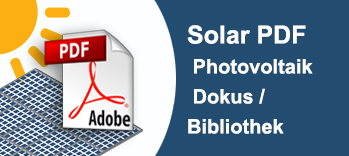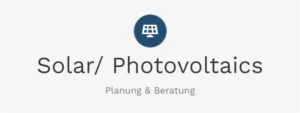The planned solar park in Wallerfangen-Ittersdorf: Larger than 50 football fields – A milestone for the Saarland energy transition
Xpert pre-release
Language selection 📢
Published on: August 15, 2025 / Updated on: August 15, 2025 – Author: Konrad Wolfenstein

The planned solar park in Wallerfangen-Ittersdorf: Larger than 50 football fields – A milestone for Saarland's energy transition – Creative image: Xpert.Digital
Larger than 50 football fields: Where radio waves once reached Europe, green energy will soon be generated
### Electricity for 10,000 homes: New solar giant aims to accelerate Saarland's energy transition ### €300,000 per year: This solar park is becoming a gold mine for a Saarland community ### No more transmission masts: What's happening now on the huge Europe 1 site in Saarland ### Saarland's new frontrunner: Why investors are lining up for this solar park ###
Site of historical significance: From the most powerful radio station to the mega-solar park: Saarland plans the future on historical ground
In the municipality of Wallerfangen-Ittersdorf, the administration is planning to build one of the largest solar parks in Saarland. What makes this project special is its location on the former site of the Europe 1 transmission masts, a place steeped in extraordinary technical and cultural history. The former Felsberg-Berus longwave transmitter broadcast the French radio station Europe 1 from 1955 to 2019 and, with a transmission power of two megawatts, was one of the most powerful broadcasting stations in Germany.
The history of this transmitter site between Berus and Ittersdorf began in the 1950s, when Saarland enjoyed a special political status. Due to the constitutional situation at the time, a private radio station was established here, broadcasting primarily to France. The striking transmitter hall, built in 1955, with its characteristic shape of an unfolded scallop shell, was the world's first large-scale building with a cast concrete roof suspended on pre-tensioned cables. Following the cessation of broadcasting operations at the end of 2019 and the demolition of the last transmission masts in October 2020, the site is now being repurposed.
Technical dimensions and performance data
The planned solar park will cover an area of approximately 40 hectares, making it one of the largest photovoltaic projects in Saarland. By comparison, the largest solar park in Saarland to date, in Weierweiler, has a capacity of 20 megawatts on a significantly smaller area. With a footprint of 40 hectares, the Wallerfang project is on a scale that makes it one of the most significant in Germany. A similarly sized solar park with 40 hectares was built by Deutsche Bahn in Schleswig-Holstein, for example, and generates around 38 gigawatt hours of energy annually.
The electricity production of the planned plant is expected to be sufficient to supply 10,000 homes with electricity. This supply capacity corresponds to an annual electricity demand of approximately 30 to 40 million kilowatt hours, based on an average household consumption of 3,000 to 4,000 kilowatt hours per year. With optimal orientation and the climatic conditions of Saarland, a photovoltaic system can generate approximately 900 to 1,000 megawatt hours of electricity annually per megawatt peak of installed capacity. This means that the planned plant will have an installed capacity of approximately 35 to 40 megawatt peak.
Economic impact on the community
The financial benefits for the municipality of Wallerfangen are substantial. Leasing the 40-hectare site is expected to generate up to €300,000 annually for the municipal coffers. This corresponds to a rental income of approximately €7,500 per hectare per year, significantly higher than the usual rates for solar park leases, which typically range between €3,000 and €4,000 per hectare. The higher rental income may be due to the particularly favorable site conditions, the existing infrastructure, and the proximity to feed-in points.
In addition to the direct lease income, the municipality benefits from other economic effects. Under the Renewable Energy Sources Act, municipalities have been entitled to a financial contribution of 0.2 cents per kilowatt-hour fed into the grid since 2023. With an annual electricity production of approximately 35 million kilowatt-hours, this would mean additional revenue of approximately €70,000 per year. In addition, trade tax revenue may be generated if the operator of the solar park is based in the municipality.
Selection process and investors
Several investors have expressed interest in the project, and the municipal council will decide on the award. This selection process is typical for municipal land leases, where, in addition to the offered rent, other criteria such as the investor's experience, technical concept, accompanying ecological measures, and local value creation play a role. The decision is expected in the fall, which is a typical timeline for such projects.
The site's high attractiveness for investors is explained by several factors. The former broadcasting site already has good connections to the power grid, as the appropriate infrastructure for operating the transmitter was in place. Furthermore, it is a contiguous, flat area without major topographical obstacles, making the installation and operation of the solar modules easier and more cost-effective.
Significance for Saarland's energy transition
The planned solar park fits into Saarland's ambitious expansion goals for renewable energies. With its 2030 Energy Roadmap, the Saarland state government has set the goal of doubling the share of renewable energies in electricity consumption from the current level of approximately 20 percent to 40 percent. By 2030, an increase of 750 megawatts in photovoltaics and 500 megawatts in wind energy is to be achieved.
Saarland faces particular challenges in the energy transition due to its high population density of 386 inhabitants per square kilometer and its significant industrial sector. Despite its limited area, the state has already made considerable progress. With 346.5 kilowatts of installed photovoltaic capacity per square kilometer, Saarland ranks first in Germany in terms of land-use efficiency. The planned solar park in Wallerfangen-Ittersdorf would make an important contribution to the expansion targets and cover approximately five percent of the targeted photovoltaic expansion by 2030.
Legal framework and approval procedures
The realization of the solar park requires a multi-stage planning and approval process. Since open-space photovoltaic systems are not among the privileged projects in open areas, the municipality must first draw up a development plan and amend the land-use plan accordingly. This process takes an average of six to twelve months and includes various assessments regarding nature and landscape conservation, soil quality, and grid connection.
A similar process is already underway for the Ihn solar park in the same municipality of Wallerfangen, where another photovoltaic system is planned on 19 hectares. The experience gained from this project can be applied to the larger project in Ittersdorf. With its ordinance on the construction of photovoltaic systems on agricultural land, Saarland has designated a framework for open-space systems, facilitating such projects.
New: Patent from the USA – Install solar parks up to 30% cheaper and 40% faster and easier – with explanatory videos!

New: Patent from the USA – Install solar parks up to 30% cheaper and 40% faster and easier – with explanatory videos! – Image: Xpert.Digital
At the heart of this technological advancement is the deliberate departure from conventional clamp fastening, which has been the standard for decades. The new, more time- and cost-effective mounting system addresses this with a fundamentally different, more intelligent concept. Instead of clamping the modules at specific points, they are inserted into a continuous, specially shaped support rail and held securely. This design ensures that all forces occurring – be they static loads from snow or dynamic loads from wind – are evenly distributed across the entire length of the module frame.
More about it here:
70,000 modules, 40 MW: How a modern solar park is created – How the Wallerfangen-Ittersdorf solar park saves 14,000 tons of CO2 annually
Technical implementation and module selection
Modern solar parks typically use monocrystalline or bifacial solar modules with outputs of over 500 watts peak per module. A planned system size of approximately 35 to 40 megawatts would require approximately 70,000 to 80,000 solar modules. The modules are mounted on metal racks that typically reach a height of two to three meters. The spacing between the module rows is chosen to minimize shading while still allowing for extensive land management.
Grid connection requires several transformer stations to convert the generated direct current into grid-compliant alternating current and transform it to the appropriate voltage level. The power is expected to be fed into the medium-voltage grid of the regional grid operator, from where it will be forwarded to the supra-regional distribution grid.
Environmental impacts and accompanying measures
Ground-mounted photovoltaic systems offer the opportunity to achieve ecological improvements. Through extensive use of the areas between and beneath the modules, flowering meadows can be created, creating habitats for insects and other small animals. Reduced intensive agricultural use often leads to soil recovery and an increase in biodiversity.
With the planned project in Ittersdorf, it must be taken into account that this is an area already in technical use, characterized by decades of use as a transmission facility. Conversion into a solar park can therefore be considered a sensible subsequent use that retains the area's character as a location for technical infrastructure while making a direct contribution to climate protection.
Climate protection impact and CO2 savings
The annual electricity production of approximately 35 million kilowatt hours enables significant savings in carbon dioxide emissions. Compared to the German electricity mix, which has CO2 emissions of approximately 400 grams per kilowatt hour, the solar park can avoid approximately 14,000 tons of CO2 annually. Over the planned operating life of 25 to 30 years, the savings total more than 350,000 tons of CO2.
This climate protection impact is roughly equivalent to the annual CO2 emissions of 7,000 average cars or the heating energy requirements of 3,500 single-family homes. The project thus makes a measurable contribution to the climate protection goals of Saarland, which aims to become climate-neutral by 2045.
Comparison with other solar park projects
In a regional comparison, the Wallerfangen-Ittersdorf solar park would occupy a leading position. Currently, Saarland's largest solar park, located in Weierweiler, has a capacity of 20 megawatts and supplies approximately 6,000 households with electricity. The planned Limbach-Dorf solar park in the municipality of Schmelz is expected to be even larger, with up to 80 megawatts and an area of 80 hectares, but is still in the planning phase.
Across Germany, a 40-hectare facility is considered one of the larger projects. The Witznitz Energy Park in Saxony, with 650 megawatts on 500 hectares, is currently the largest solar park in Germany. However, projects of the size of the planned Wallerfang solar park can be found in many German states, demonstrating the growing importance of large-scale photovoltaic systems for the energy transition.
Economic framework and financing
Today, solar parks are primarily financed through long-term electricity supply contracts or marketing on the electricity market in combination with feed-in tariffs under the Renewable Energy Sources Act. Large photovoltaic systems can now achieve electricity generation costs of less than six cents per kilowatt hour, making them competitive with conventional power plants.
Depending on the size and site conditions, investment costs for solar parks range between €650,000 and €800,000 per megawatt of installed capacity. For the planned solar park in Wallerfangen-Ittersdorf, this would equate to total investments of approximately €25 million to €30 million. This sum reflects the project's significant economic importance for the region and the associated opportunities for local companies in the construction and maintenance of the facility.
Citizen participation and social acceptance
Modern solar park projects are increasingly relying on citizen participation to increase social acceptance and enable local value creation. Possible forms of participation range from informational events and subordinated loans to the establishment of energy cooperatives. Municipal participation in the projects is also becoming more common, with the municipality itself acting as an investor or acquiring shares in the solar park.
Acceptance of photovoltaic projects is generally high among the population, as they are perceived as environmentally friendly and noise-free. Unlike with wind turbines, there are rarely protests or major resistance against solar farms. The use of an area already characterized by technological developments, such as the former broadcasting site, is likely to further increase acceptance, as it does not alter pristine landscapes.
Impact on the local economy
The construction and operation of the solar park offers opportunities for the local economy. During the construction phase, numerous jobs will be required in earthworks, electrical installation, logistics, and project management. Regional companies can benefit from contracts for planning services, security technology, maintenance, and landscaping.
Over the entire operating life of the facility, permanent jobs will be created for maintenance, monitoring, and administration. Although this number is limited, they contribute to regional value creation. The municipality's annual lease income can be invested in local infrastructure projects, educational institutions, or other municipal projects, thus benefiting the entire community.
Technological innovations and future prospects
Modern solar parks are increasingly integrating innovative technologies to optimize power generation and grid integration. These include smart inverters that can contribute to grid stability, as well as monitoring systems that continuously monitor plant operation and automatically respond to disruptions.
Further technological developments that will increase the efficiency of solar parks are expected in the future. These include improved module efficiencies, bifacial modules that also utilize the backside for power generation, and the integration of battery storage systems for intermediate storage of the generated energy. These developments could also be relevant for the solar park in Wallerfangen-Ittersdorf if appropriate options are considered during the planning phase.
The planned solar park in Wallerfangen-Ittersdorf thus exemplifies the transformation of energy supply in Saarland. On a site steeped in technological history, a modern power plant for the future is being built, contributing to security of supply, climate protection, and the economic development of the region. The municipal council's decision in the fall will determine which investor will be trusted to realize this significant project and thus write a new chapter in the site's energy history.
Look, this little detail saves up to 40% installation time and costs up to 30% less. It's from the USA and patented.

New: Assemble-ready Solar systems! This patented innovation accelerates your solar construction massively
The heart of ModuRack's innovation is its departure from conventional clamp fastening. Instead of clamps, the modules are inserted and held in place by a continuous support rail.
More about it here:
Your partner for business development in the field of photovoltaics and construction
From industrial roof PV to solar parks to larger solar parking spaces
☑️ Our business language is English or German
☑️ NEW: Correspondence in your national language!
I would be happy to serve you and my team as a personal advisor.
You can contact me by filling out the contact form or simply call me on +49 89 89 674 804 (Munich) . My email address is: wolfenstein ∂ xpert.digital
I'm looking forward to our joint project.
























